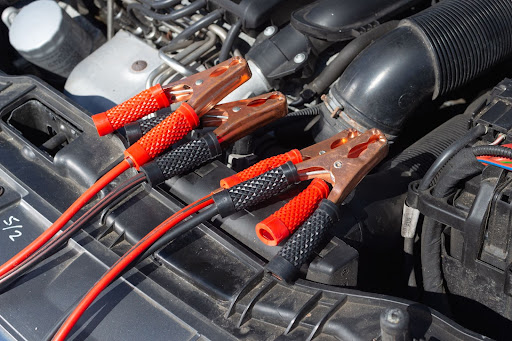The green light, highlighting a small row of amber lights around the track, signifies the moment when a pair of dragsters starts. And so the two incredibly powerful, unusually elongated cars launch, leaving the flames behind them, with frantic acceleration. And there’s a good chance that one of them could take off with the slightest mistake in the aerodynamics calculation. And the 10,000 horsepower contributes to that perfectly. Acceleration to a hundred in less than half a second loads a dragster pilot up to 4G.
The distance at which dragsters start varies depending on the particular series of races. Most often it is 1,000 feet (304.8 m), but in different types of races it can be up to 800 meters.
The main factor that sets Top Fuel dragsters apart from other race cars is that they are considered the fastest and most powerful cars on the planet. In fact, just one of the eight cylinders in the engine produces about 1,000 horsepower – as much as a Formula One car produces in the entire engine. Use our source
All dragsters achieve tremendous power from engines of about 6.5 to 8.2 liters of displacement. Moreover, the maximum displacement set by the drag race organizers is 8.2 liters. No surprise there, is there?! But the superchargers and a special type of fuel make them capable of developing about 8,000 horsepower. However, according to some estimates, the power still reaches all 10,000 horsepower – and there are good reasons for such discrepancies and inaccuracies. The fact is that dragster engines cannot be measured with a dynamometer, a device that evaluates the power and torque of a car. Thus, the amount of power Top Fuel dragsters have is calculated using mathematical equations that can leave room for debate.
The engine before the dragster race
Dragster engines use, of course, not gasoline, not methane, and certainly not diesel. They need nitromethane, a special kind of fuel that gives off a lot of energy when burning – much more than gasoline. What’s more, the concentration and composition of the fuel is made specifically for drag racing. It’s a complex balance that requires fine-tuning and the car itself. And all this effort just to get racers going at previously unheard of speeds and acceleration as fast as possible through the damn quarter mile!
The people who build dragster engines – engineers, mechanics, and amateur drag racers all over the world – eventually came to the conclusion that a nitromethane mixture was the best fuel for these particular types of engines. Nitromethane is a dangerous volatile substance that is often used for pesticides, pharmaceuticals, heavy cleaning solvents, and even rocket fuel. Anyway, the Germans in the 1930s and the Americans in the 1940s independently discovered that nitromethane could also be used in racing cars. The results of such findings were often lamentable – racers were often killed by exploding race cars. But engineers didn’t stop and continued to do experiments on the use of nitromethane in internal combustion engines.
Exploding dragster engine
Nitromethane is very dangerous. If the dragster engine is not running properly, and the unburned fuel is not completely burned in the engine during the first combustion cycle, it can explode with force strong enough to rupture the cylinder head or engine block. Nitromethane can also explode from a little heat or shaking. This is one explanation for why dragsters have a lot of flame coming out the back of their exhaust pipes – unburned fuel heats up as it comes out through the exhaust system and ignites when it comes into contact with the atmosphere.
An engine that runs on nitromethane tends to have much less compression than a gasoline engine (which at first glance is counterintuitive). But the explanation for this is that, unlike gasoline, nitromethane itself contains oxygen, so the engine doesn’t need as much air for the combustion cycle, allowing it to run at lower compression. However, the engine and its components are under such tremendous pressure that all connections must be carefully checked on a regular basis.
Currently, Top Fuel dragsters run on a mixture that is 90 percent nitromethane and 10 percent methanol. Methanol helps suppress detonation, which makes the fuel more stable.
Nitromethane can also be mixed with a third substance other than methanol to help increase its energy potential, but this tactic is banned by most race organizers. In part, such a ban is worthwhile because other fuel mixtures are more dangerous.
But there is no cooling system for dragster engines at all. The engine simply does not have time to heat up to destructive temperatures in a short period of time. The absence of a cooling jacket inside the engine block provides a significant increase in its durability.
The dragster cars start and reach 100 kilometers per hour in less than half a second, and 160 kilometers per hour in less than a second. This makes them the fastest accelerating cars in the world, as well as the fastest in principle. Power from the engine reaches the wheels in a fraction of a second — about 15 fractions of a second, to be exact. At launch, dragster drivers endure a load similar to astronauts during the launch of a spaceship. And almost as quickly they have to stop. After crossing the finish line, the driver presses a button that deploys two parachutes behind the car, and the intense wind resistance slows the car with minimal risk of additional mechanical damage.
Drag racing spectators are advised to wear hearing protection when watching a dragster race. The noise made by the engines can even destroy weak eardrums when they are close to a dragster running at maximum speed.
Dragsters are essentially considered the loudest race cars, in part because of the way the engine is mounted. If that engine were at least under the hood, as in a regular car, at least there would be some insulation to muffle the sound. But alas, cars don’t even have mufflers.
One drag race organizer, the NHRA, once let a team of seismologists stand on the starting line to measure seismic activity levels, just as if they were measuring an earthquake. The measurements produced two machines that produced activity rated at 2.3 on the Richter scale. This is equivalent to a minor earthquake, which many people feel.
As for the sonic power of dragsters, experts estimate that these cars can produce a roar of over 150 decibels, a level that can cause physical damage to the eardrum. By comparison, a typical rock concert generates about 100-120 decibels.
To date, there is no sign of drag racing’s popularity declining anytime soon. In fact, within just the last few years, the cars themselves have become even more powerful.
Even more about the engines of dragsters – they live about 3 minutes, after which a whole reconstruction awaits them – very much – from spark plugs to gaskets are changed.
And finally, the most interesting facts about dragsters, which are hard to believe at once.
At maximum load, the dragster’s engine consumes more than 5 liters of nitromethane per second. By comparison, a huge Boeing consumes about the same amount.
The spark plugs in dragster engines are disposable. Moreover, they do not live to the end of a 3-minute race. First the engine warms up, then it lapping takes place, and at this time the plugs are far from being worn out. At the end of the 3-minute race, in the last 5 seconds from the start to the moment of crossing the finish line, the plugs are already killed in the first half of the race, and the ignition is due to compression.
The tires of the dragster’s driving wheels usually increase in diameter to the end of the race by 15-25% due to heat and wear. The tires, by the way, are disposable, as well as the plugs.
The power of a standard V8 engine from some sports car isn’t enough to even turn the dragster’s engine.
The dragster will reach a speed of 450 km/hour faster than you will read this fact.
On average, one dragster run costs its team about $5,000.
The dragster doesn’t have a gearbox, and a four- to five-speed clutch transfers torque from the engine to the wheels.










